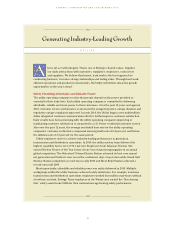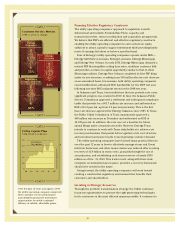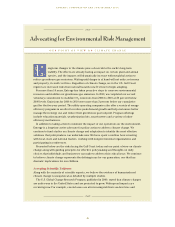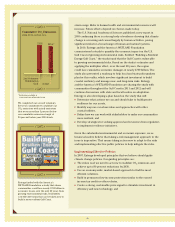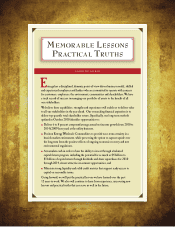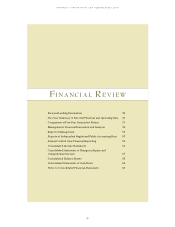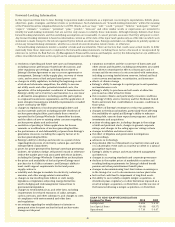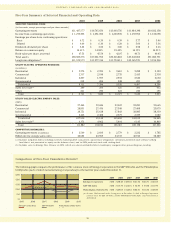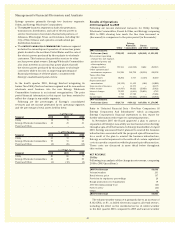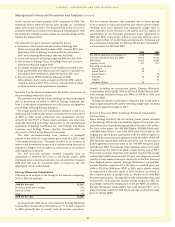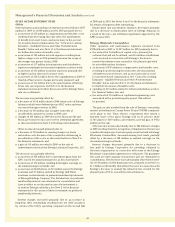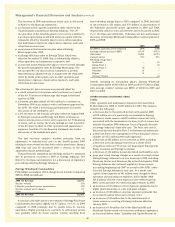Entergy 2010 Annual Report Download - page 28
Download and view the complete annual report
Please find page 28 of the 2010 Entergy annual report below. You can navigate through the pages in the report by either clicking on the pages listed below, or by using the keyword search tool below to find specific information within the annual report.
* Verifi cation available at
www.americancarbonregistry.org
Cumulative CO
2
Emissions
2006-2010, million tons
Actual
2nd Voluntary
Stabilization
Goal
212.8
205.6*
We completed our second voluntary
fi ve-year commitment to stabilize our
CO
2
emissions with actual emissions
that were more than 3 percent below
our cumulative emissions target of
20 percent below year 2000 levels.
Entergy funded with the America’s
WETLAND Foundation a study that shows
communities could face nearly $700 billion in
economic losses over the next 20 years from
growing environmental risks. It identifi es
cost-effective steps that can be taken now to
build a more resilient Gulf Coast.
storm surge. Risks to human health and environmental resources will
increase. Future effects depend on choices made today.
The U.S. National Academy of Sciences published a new report in
2010 confi rming there is a strong body of evidence showing that climate
change is occurring and caused largely by human activities, posing
signifi cant risks for a broad range of human and natural systems.
In 2010, Entergy and the America’s WETLAND Foundation
commissioned a study to quantify the economic impact on the U.S.
Gulf Coast of growing environmental risks. Entitled “Building a Resilient
Energy Gulf Coast,” the study found that the Gulf Coast is vulnerable
to growing environmental risks. Based on the study’s estimates and
applying the multiplier effect, over the next 20 years, the region
could face cumulative economic damages of nearly $700 billion. The
study also presented a roadmap to help local and state policymakers
plan for this reality, which involves signifi cant investment to build
coastal resiliency and manage near- and long-term risks. Entergy
and the America’s WETLAND Foundation are sharing the study with
communities throughout the Gulf Coast in 2011 and 2012 and will
continue discussions with state and local leaders on adaptation.
Entergy is also developing a plan based on the study that will:
n
Determine what actions we can and should take to build greater
resilience for our assets,
n
Identify ways we can share ideas and approaches with other
coastal utilities,
n
Defi ne how we can work with stakeholders to make our communities
more resilient, and
n
Develop strategies for seeking approval and resources from regulators
to implement resilience initiatives.
Given the substantial environmental and economic exposure, we as
business leaders believe that taking a risk management approach to the
issue is imperative. That means taking action now to adapt to the risks
and implementing effective public policies to help mitigate the risks.
Implementing Effective Policies
In 2007, Entergy developed principles that we believe should guide
climate change policies. Our guiding principles are:
n
The risk is real; we need to act now to stabilize CO
2
emissions and
achieve up to 80 percent reductions by 2050,
n
Use an economy-wide, market-based approach to fi nd the most
effi cient solutions,
n
Build in permanent low-income protection similar to the earned
income tax credit or other rebates,
n
Create a strong, sustainable price signal to stimulate investment in
effi ciency and new technology, and
26



